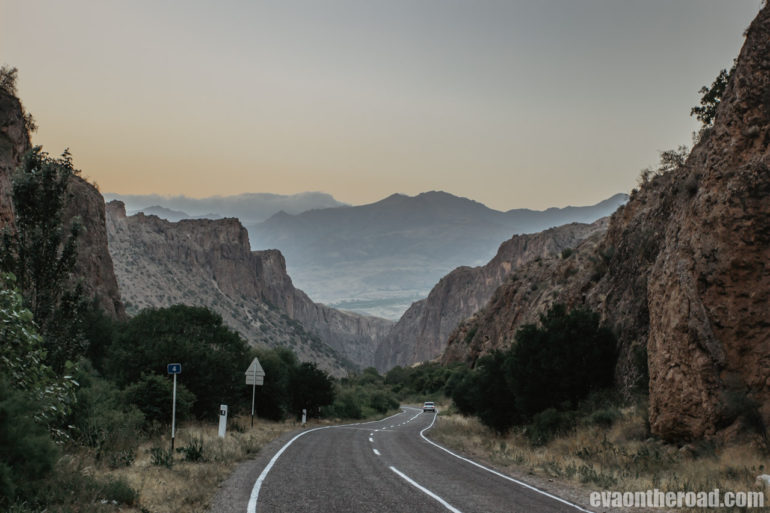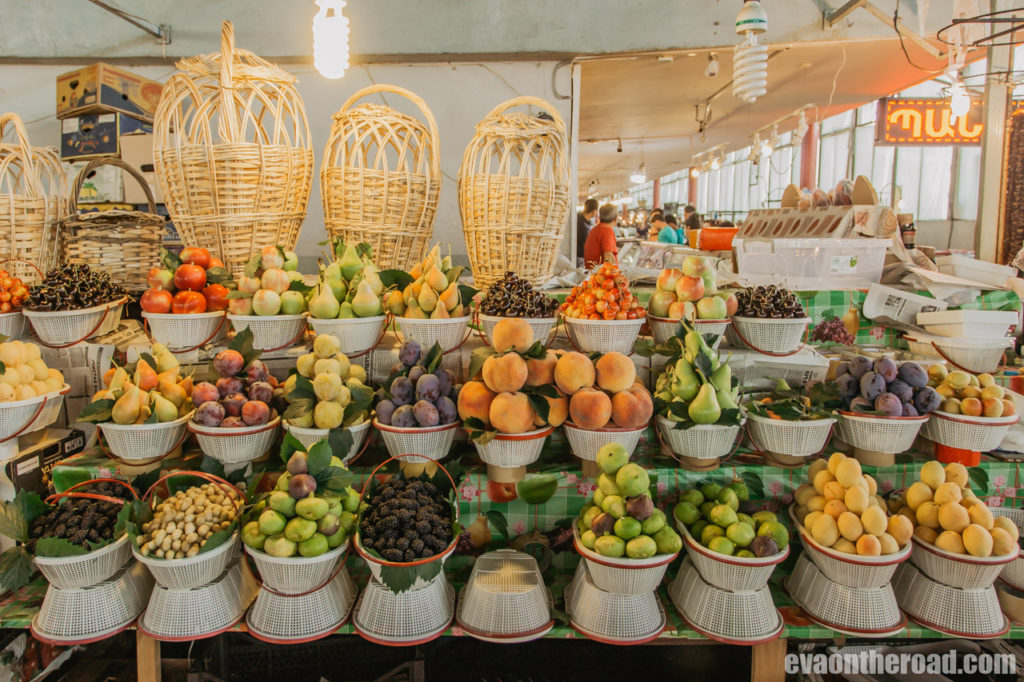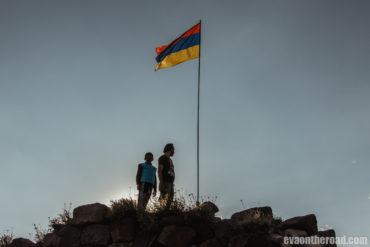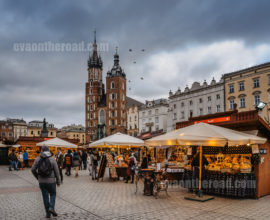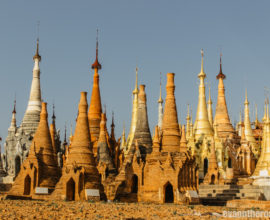Armenia – practical information
Armenia attracts travellers to abandoned monasteries standing in the mountains, azure lakes, alpine hikes and unspoiled nature. Mass tourism has not yet spread here, so you have an excellent opportunity to discover some places all by yourself. Relations with neighbouring Turkey and Azerbaijan are tense but do not affect the security situation. Tourists are really welcomed here. I can guarantee that you will return excited from an expedition to Armenia.
Obsah článku
Entering the country
You don´t need a visa to stay in Armenia (for Czech citizens). Officially, there is a registration obligation applied, that a foreigner has to report to the police within 3 days after entering Armenia, but in practice nobody requires, checks or enforces that. We spent 3 weeks in the country, we did not report to anyone and we did not see any check on departure. Often discussed is the relationship between Armenia and Azerbaijan and the opportunity to visit both countries. They fact is, they do not love each other. The bone of contention is the territory of Nagorno-Karabakh (Artsakh), which is now “officially” administered by Armenia. If you plan to visit both countries, go to Azerbaijan first. Even so, you will be interrogated at the border whether you have been to Armenia or are going to go there. The same question will be randomly asked by “ordinary” people while traveling around the country. It is always better to say that you are not going to Armenia. In Armenia, while examining the Azerbaijan stamp in your passport at the border, they are questioning why you are going to Armenia, what plans you have, where you will stay, when you are going to leave, etc., but they will let you into the country. They like the Czechs. As for Nagorno-Karabakh, you will need a visa to enter this area. It is given at the border free of charge for 30 days after filling in a form (again questions about what, how long and why). Nagorno-Karabakh has never been officially recognized internationally, which fortunately the customs officers are aware of, so they will give you a visa on a separate paper that is only inserted into your passport and can be removed at any time. They also give you another paper that you return at the border when you leave Karabakh. This way, no country will know that you have visited this area. The Nagorno-Karabakh visa is a lifetime stop for a visit to Azerbaijan.
Currency
The Armenian currency is dram with its international abbreviation AMD. The rate in July 2019 was 100 AMD = 0,18 EUR. Be ready to be a millionaire with your wallet stuffed in Armenia. Banknotes are worth 500, 1,000, 5,000, 10,000, 20,000, 50,000 and 100,000 drams, and coins are worth 10, 20, 50, 100, 200 and 500 drams. Dram also applies in Nagorno-Karabakh. You can easily exchange euros and US dollars, there are quite a lot of exchange offices everywhere. Credit cards are commonly used in large cities, but have your cash prepared for villages and small towns, as well as guest houses, and always the exact amount, if possible.
Transport
The cheapest means of transport are marshrutkas (shared taxis) and buses. But sometimes it is difficult to find out when and from where they leave. Timetables are changing or not followed at all. On some routes, connections are less frequent or not at all. This time, we chose to rent a car, which is not very cheap in Armenia, but we wanted to see as much as possible and be free. In Yerevan, most international rental companies (Sixt, Hertz, Europcar, etc.) have their offices, but there are also many local ones. We used Naniko and borrowed Hyundai Getz for $ 31 / day. On the roads, you will mainly meet “Moskvitch”, Volga and “Ziguli” with crazy drivers. Driving in Armenia is adrenaline and you have to be aware that drivers routinely turn in the opposite direction or overtake wherever they want. But it must be said that we have not seen any accident in 3 weeks, no policeman has checked us, and when our car broke, then immediately, two cars stopped to help us. Most roads are in a good condition. Just on the eastern side of Lake Sevan there is a dirt road with huge potholes, where you have to drive at twenty km/hour. Otherwise, however, in many places there is a new asphalt or comfortable road. You can also drive to Nagorno-Karabakh with a car rented in Armenia. The roads there are in a good condition as well. If you don’t plan any off-road trips or terrain through forests and fields, you don’t need a 4×4 drive. We were also quite surprised that taxi transport (even over long distances) is cheap, especially when you use the Bolt app. If you don´t use the app, always agree on the price with a taxi driver in advance and be careful with taxi drivers in Yerevan. They will always try to cheat you. Rail transport is not developed here.
Language
Armenian is a difficult language with lots of dialects. Even basic words were a problem for us. Nowhere else in the world you can speak Armenian, and unfortunately the script is not similar to any other. So if you go to Armenia, learn at least a few words and basic phrases in Russian. A large part of the elderly can speak Russian, and sometimes you will come across the younger ones, who speak Russian, too. You might only use English in Yerevan, otherwise don’t count on it. But some guesthouse owners are eager and speak basic English at least. The increase of tourism will certainly improve this.
Accommodation
You can find hotels mainly in Yerevan and in resorts around Lake Sevan, Dilijan and Jermuk. The best and cheapest option is private accommodation, either B&B or guesthouse. In this way, your hosts rent you a room or part of the house in which they live and usually they also offer you some meals. Especially in Yerevan you will also find hostels. The www.booking.com works well, and searching on the spot is also easy. Accommodation in Yerevan is obviously the most expensive, otherwise expect an average price of 10,000 dram for a double room with breakfast.
Internet and phonecalls
Mobile and Internet coverage is good and cheap throughout the country. If you plan to stay for more than a week, it is worth buying a SIM card from one of the local operators. You will need a passportfor it. We used the services of the VivaCelloperator,we bought a SIM card with a tariff for 300 SMS, 400 min of calls and 5 GB of data for 2,600 dram. The tariff is valid for 30 days, we used it for maps, navigation, Google search, and we also played songs and didn’t run out of data. VivaCell also has a mobile application through which you can control the amount of data you´ve spent. The SIM card did not work in Nagorno-Karabakh. You would have to buy another one there. Otherwise, wi-fi is available in all restaurants and, with just a few exceptions it was available and worked well in guest houses.
Food and drink
Armenian cuisine is greatly influenced by the history and all different nations that have inhabited the country. It combines Turkish, Greek, Russian and Persian elements. They cook from fresh ingredients, not chemically modified. Fruits and vegetables are grown all over the country in villages, animals are free in pastures. In each town you will find a local “farmer” market, where you can get cheese, milk, fresh herbs, fruits, vegetables and meat, but also flour, rice or pasta – all that is sold weighted. Armenian cuisine is characterized with meat, especially grilled (chorovac). Another typical meal is dolma (rice with meat wrapped in vine leaves), lavash (thin bread pancake), kebab and other Lebanese food like tabouleh (salad of parsley, bulgur, onion and tomato flavoured with pomegranate), hummus (chickpea paste with garlic) and various pasties. In Yerevan you can have Western European meals. Baklava is a favourite dessert. The most favourite drink is strong, finely ground coffee with a dense ground on the bottom, beer (Kilikia, Erebuni or Kotyak) and vodka. The national distillate is cognac, but it is mainly produced for export, it is too expensive for the Armenians. In wine regions almost everyone makes their own house wine, but if you want wine of a really good quality, buy red one made of Areni variety.
Safety and health
Armenia is a safe country with friendly people. Armenians will be pleased to treat you, help you in trouble, give advice or just talk to you. Theftsare quite exceptional. The only threat you may encounter,are local drivers. Traffic regulations and signs mean nothing here, blowing the horn is a national sport, drivers are very lively and do not respect lines. If you drive, be patient, think of other drivers as well and be very careful. You can read everywhere that it is not recommended to go to Nagorno-Karabakh. We have asked a few Armenians if it is safe to go there, and everyone assured us that it was. So we drove to Karabakh, travelled only to the most visited places by tourists and we did not encounter any problem or danger. But the truth is that someone told us later on that the border with Azerbaijan is still a fighting area and someone dies there every day. You do not have to worry about Nagorno-Karabakh, but do not travel to the border zones at all. There are no health risks and special vaccination is not necessary.
Prices
Most things are cheaper than in our country (CZ), only imported goods are more expensive. In restaurants you will sometimes be credited with a tip of 10% of the total price.
1.5 litres of water – 200 dram
soup – 1,300 dram
kebab– 1,000 dram
hummus– 1,300 dram
tabouleh – 800 dram
Fanta, Cola, Sprite in a restaurant – 300 dram
bottle of red Areni good wine – 3,500 dram
bottle of standard wine – 1,700 dram
beer in a restaurant – 500 dram
beer in a shop – 300 dram
1 kg melon – 100 dram
ice cream in a shop – from 100 dram
1 litre of petrol – 430 dram
It is a country of mountains and hundreds of monasteries on the border of Europe and Asia. This would be a brief description of Armenia, which lies in the shadow of neighbouring Georgia and has ...
Read More
